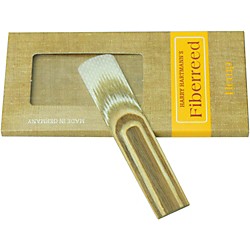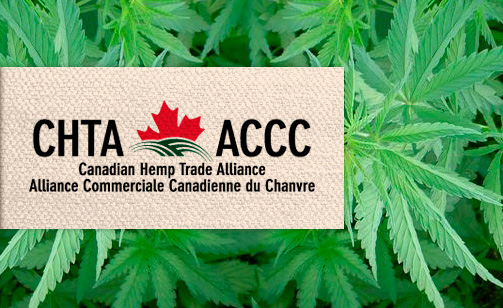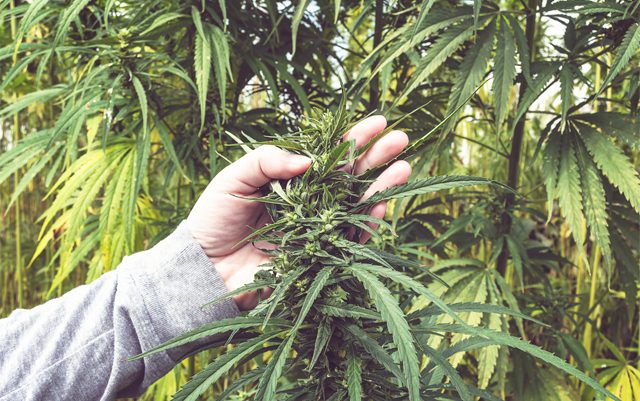At 5 years old, young Charlotte Figi had been suffering roughly 300 grand mal seizures weekly for years when her father, Matt, looking for alternatives to her mostly unsuccessful traditional allopathic treatments, found a video online extolling the benefits of CBD oil in the treatment of Dravet Syndrome. Under Colorado’s fledgling medical marijuana program, Charlotte’s parents found a strain of high cannabidiol (CBD), low tetrahydrocannabinol (THC), cannabis flower named R4 being sold at a Colorado dispensary. They bought a few ounces and worked with friends to extract oil from it. High-CBD, low-THC cannabis is a desirable medicine, both for the therapeutic benefits of CBD and the low presence of THC, which minimizes psychoactivity. Charlotte responded favorably to her very first dose, bringing the frequency of her seizures down to one per week.
Her parents then met the Stanley brothers, owners of Colorado’s largest dispensary at the time and cultivators of a high-CBD strain of cannabis very few people were purchasing. Together, they developed the dormant strain into a continual harvest and constant supply of medical marijuana CBD oil to treat Charlotte, and subsequently, other patients seeking similar relief. The strain became what’s known today as Charlotte’s Web. When the news of this process, and others like it, aired on CNN medical correspondent
Sanjay Gupta’s documentary Weed in 2013, people across the globe, especially parents of children suffering seizures, flocked to the Internet to find this “miracle” CBD oil. Little was to be found.
Capitalizing businesses quickly jumped in to fill the void created by the Federal Controlled Substances Act, which strictly prohibits the use and sale of marijuana because of the presence of THC, not CBD. Under the law, hemp-derived CBD is completely legal, but CBD doesn’t appear out of thin air. In order to produce CBD oil, you must first harvest high-CBD cannabis plants, legally. In the United States, this requires growers to be licensed in their state either as an industrial hemp farmer or a medical/recreational marijuana grower. Not all states provide these licenses, and where some do, each type of license has a completely different set of parameters, rules, and regulations, including whom you can sell your products to.
Needless to say, the rabid overnight demand for CBD oil combined with the intricacies of a nation involved in a drug war created a very confusing topic, and an opportunity for businesses to sell snake oil. Still today, people are discovering the wonders of CBD and yearning for information on how to obtain it. In an effort to untangle this web, here’s a go-to guide for understanding the differences between hemp-derived CBD oils and marijuana-derived CBD oils.
Hemp CBD Oil
Cannabidiol (CBD) is a cannabinoid known largely for its muscle relaxant properties. Isolated on its own, CBD is non-psychoactive and it’s been reported to be effective in treating seizures, even in young children.
CBD is found in both the drug producing Cannabis Indica and hemp producing Cannabis Sativa. Hemp CBD oil is derived from industrial hemp, the C. Sativa species of cannabis, which produces nearly no amount of the cannabinoid Delta-9-tetrahydrocannabinol (THC), but does produce some amount of the cannabinoid Cannabidiol (CBD). Industrialized hemp production is legal at the federal level, with laws and licensure varying from state-to-state.
Not All Hemp CBD Oils Are Created Equal
Not many cannabis researchers or cannabis professionals will refute the efficacy and wonders of the cannabinoid Cannabidiol. It can be a potent and powerful product with amazing therapeutic benefits. However, the ways in which cannabidiol is extracted from industrial hemp plants, then manufactured, concentrated, formulated, etc., and delivered or administered to a customer or patient, is largely suspect. Some customers have even reported becoming violently ill from poorly manufactured hemp CBD products, many of which either contain mysterious inactive chemicals or ingredients different than those listed on the label.
Hemp CBD is regulated by the FDA as a dietary supplement, and like other dietary supplements
the FDA is “not authorized to review dietary supplement products for safety and effectiveness before they are marketed.” This is in direct opposition to most modern day medical and recreational marijuana markets. Both regulated medical and recreational markets typically have stringent production and testing guidelines and manufacturing regulations, and these guidlines typically exclude the sale of hemp-derived CBD through medical and recreational dispensaries.
“In late February 2015, FDA issued several warning letters to firms that market unapproved drugs for the diagnosis, cure, mitigation, treatment, or prevention of diseases. Some of these firms claim that their products contain cannabidiol (CBD). FDA has tested those products and, in some of them, did not detect any CBD. It is important to note that these products are not approved by FDA for the diagnosis, cure, mitigation, treatment, or prevention of any disease, and often they do not even contain the ingredients found on the label. Consumers should beware purchasing and using any such products.”
A list of FDA warning letters and test results for Cannabidiol related products and manufactures can be found here.
Conversely, the Stanley Brothers, creators of the original Charlotte’s Web now manufacture CBD Hemp Oil under the name CW Hemp. Because Charlotte’s Web products contain less than 0.3 percent THC, they are allowed by U.S. Federal law to ship their acclaimed Hemp CBD oil products straight to your doorstep.
Many Medical Marijuana Producers Are Producing Consistent, Top Quality CBD, Too
Charlotte’s Web is not the only high-CBD strain or CBD product out there. Strains like AC/DC,
Harlequin,
Cannatonic, Sour Tsunami, Ringo’s Gift, and many others exist.
Since 1996, there have been several medical marijuana markets growing in the western United States. In the region, states like California, Washington, and Oregon created an avenue for seasoned cannabis cultivators to farm cannabis medicines for their patients. Nearly two decades later, these states and several others, including Colorado, are expanding into the country’s first full-fledged recreational cannabis markets. Growers in these markets have been producing both high-THC and high-CBD strains of marijuana and merging them into edibles,
concentrates, and topicals of all forms to assist customers and patients with their therapeutic needs.
These markets are now becoming known for having
stricter testing standards than standard produce agriculture, and now nearly half the country’s states have
some form of medical marijuana program or more. In these markets, medical marijuana cardholders can typically access CBD products containing much higher concentrations of Cannabidiol than hemp-derived CBD products, and due to stringent testing, oftentimes purer CBD products as well. When obtaining CBD products through a regulated medical or recreational marijuana marketplace, customer service representatives should be able to display and explain a product's origins, ingredients, and test results. State-certified labs provide these insights, and some even provide full cannabinoid and
terpene analysis, too.
CBD Works Best Combined With Other Cannabinoids
Cannabis contains hundreds of compounds, 80 of which are currently categorized as cannabinoids. CBD and THC are the principal cannabinoids in cannabis, both commonly occurring in the relatively largest concentrations, and they are incredibly synergistic.
Embracing the full-spectrum of cannabis’ naturally occurring phytonutrients is part of a process called whole plant medicine. This practice is highly regarded in the holistic and alternative medicine communities, existing in stark contrast to the practice of fractionated medicine, a process involving the heavy use processing and chemical synthesis popularized by the pharmaceutical industry.
Long before people began hybridizing cannabis to create the highest THC strain to wow judges at cannabis competitions, naturally occurring fields of cannabis most likely contained plants with moderate concentrations of both primary cannabinoids CBD and THC along with other naturally occurring therapeutic cannabinoids like CBG, CBN, plus various terpenes, flavonoids, and all other phytonutrients found in healthy cannabis plants. Thanks to Israeli researcher Raphael Mechoulam, the synergies of all these compounds working together is now known as
“The Entourage Effect.”
While not sanctioned for children because of its euphoria-producing properties, adding any amount of THC to a therapeutic dose of CBD largely enhances CBD’s effects. Medical cardholders in many states can now access CBD products with varying ratios of CBD to THC. Everything from 20:1 to 1:1 ratios, even 2 parts THC to 1 part CBD, make for an incredibly therapeutic array of options for patients seeking the benefits of Cannabidiol.
Hopefully this guide will help you better understand the intricacies and the processes involved in accessing varying forms of CBD.

 New seed line is aimed at the food and oil markets
New seed line is aimed at the food and oil markets










